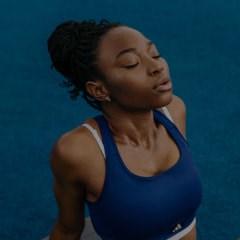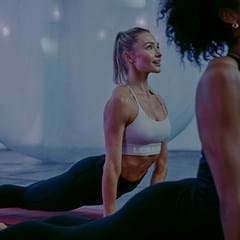June is Pride month, a month dedicated to celebrating the LGBTTQIA+ communities all around the world. The month of June was chosen to honor the 1969 Stonewall Uprising in Manhattan, which was a tipping point for the Gay Liberation Movement in the United States. To recognize the importance of this month, we spoke to group fitness instructors from the LGBTTQIA+ community to share some of their stories.
Watch the LES MILLS Change Series videos exploring the experiences of LGBTTQIA+ people in fitness.
Adrian Ljungqvist (Sweden)

I grew up in a very small town outside Gothenburg, Sweden. Bullying was part of my everyday life and it carried on for eight years. It was all verbal: comments about my appearance and so on. Being different makes you more vulnerable to being picked on.
Eventually, I moved away from the area for a fresh start and that's when I discovered group fitness. I was dealing with some family tragedies at the time and exercise was therapy for me. The release of endorphins and the connection with others helped me deal with a deep grief and overcome the lack of confidence that had plagued my life.
My passion for fitness grew and I decided I wanted to inspire others to experience the same joy in movement that I did. I became a LES MILLS SPRINT™ Instructor three years ago, and I have never felt so accepted as I do now. I love the fact that group fitness doesn’t judge our looks or our background; in the studio, everyone is welcome.
Today, I use my social media to fight against bullying and recognize mental illness. I never want anyone to go through what I did growing up – the bullying and the loneliness, the suffering. Being a Les Mills Instructor has helped me find myself – my real self. Now, I have self-confidence and I know how I want to be seen. I dare to be proud of it.
Natarsha Överlund (Finland)
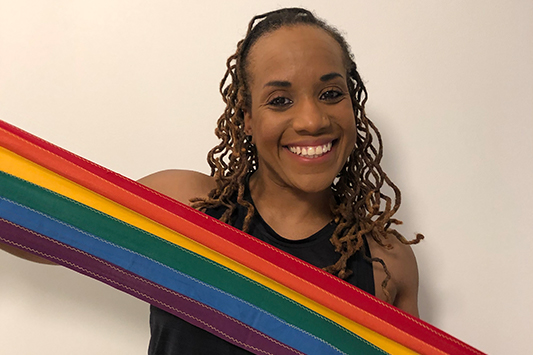
I’m Tash, an American who immigrated to Finland at age 19 to be with my (then) girlfriend whom I met online. Almost 21 years later, I’m now also a Finnish citizen and she’s my wife. Although I was proudly out to most, I didn’t exactly volunteer to share that I was a lesbian. People always assumed I married a Finnish man. I grew so tired of correcting people who asked, “What does your husband do?” that I simply stopped answering.
When I started working as a group fitness Instructor here in Finland, I noticed that most of the ‘out’ LGBTTQIA+ Instructors were young Finnish men – and they were widely accepted. My experience was different: I was already the Black immigrant girl who didn’t speak the language well, and I knew there would be another level of discrimination or stigma if I came out. It’s not that I was ashamed of who I am, but rather I wanted people to get to know me, not see me only as ‘The Black Lesbian’.
After my wife and I married in 2008 I stopped caring how I would be labeled, what others thought. I love her and she loves me and that’s really all that matters. I started to be even more open about my sexuality, and I got a tattoo of the equality symbol to my arm – displaying my pride. I feel like this is a signal to other LGBTTQIA+ people, whether they are out or in the closet, to know they have an ally. I recently spotted a new participant in my BODYCOMBAT™ class with the same tattoo, and it was a great feeling when we both noticed and smiled at one another.
Nowadays I’m proudly open on all social media outlets, promoting equality for all: the LGBTTQIA+ community, the Black Lives Matter movement, and health and fitness. And after about 12 years working in the fitness industry – working hard to improve my craft, showing my passion to motivate and encourage others – I’ve become well respected and loved and I don’t feel judged for who I am. I’m proud of my journey.
Harry Carr (Australia)

The fitness industry is a complex place. It provides a way to be part of the smaller LGBTTQIA+ community within gyms, but also allows one to discover and be part of the larger overall fitness community.
Group fitness presents an incredible opportunity to be who you are and – most importantly – be appreciated for your uniqueness. It provides a place where you aren't questioned or judged for your identity but rather for how you show up, how you act as a role model. The fitness industry provides a space to be authentic. I've learned that people come to my class to see me as me, not as someone I am not, and this is so important. It has shown me the value in being myself.
Young people face a lot of challenges in both forming their own identity and finding LQBTTQIA+ people to connect with can be hard. There’s work to be done to facilitate connection in the community, because this is often where people struggle. I would like to find a way to replicate the connection we create in our classes in the LGBTTQIA+ community. It’s a space where those pathways are missing.
Anonymous – identity concealed to protect Instructor (Singapore)
In Singapore, we still have penal code 377A that criminalises sex between consenting male adults. Even though the government states that in practise they wouldn’t persecute anybody, they remain unwilling to remove the law because of the belief that it maintains ‘social morals’. This adds invisible pressure to individuals like me. It saddens me that we have this social stigma that means you are judged because of who you truly are. The so-called ‘social morality’ is also supported in the traditional family structure of a man, woman and their children, even in a modern society like Singapore.
I'm not out to my parents because I don’t feel that they would be able to accept me for who I am. It's also not something I go around openly telling people. I don't lie about it, but I'm not volunteering the information unless asked.
One of the things that helped me accept being gay was attending and teaching group fitness. The studio has no judgement. I am who I am for at least the duration of the class, and no one gets offended by it. It's also a place where people can grow without being held back by their sexual preferences.
Ciera Gump (USA)
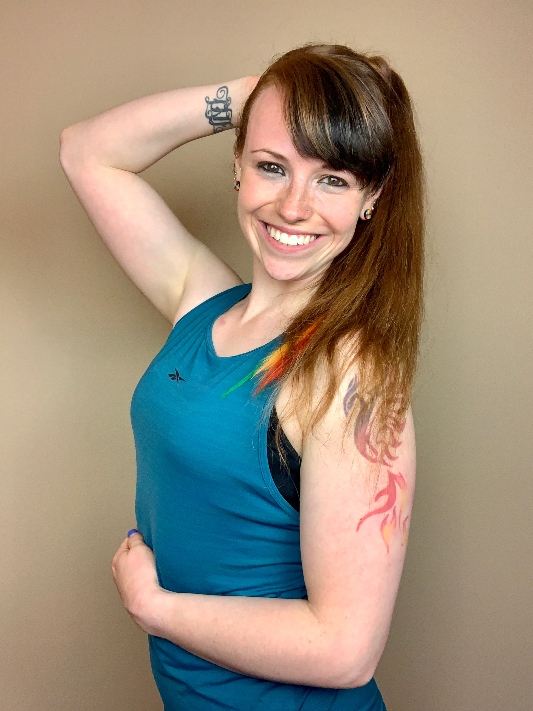
Being part of the LGBTTQIA+ community means I live and love a little differently than the mainstream. Of the acronym, I am BQ+, because I am bisexual, queer, and poly-amorous. Having a relationship style where we practice consensual non-monogamy is really fulfilling, because I get to express all parts of my sexuality and experience love in different ways. I don’t have to choose between my boyfriend or girlfriend, because we have a unique arrangement that incorporates these special people into my life. We work well together, collaborating and contributing so much to build meaningful integrated lives.
As a youth, I was bullied and called ‘gay’, and picked on for my eccentric or colorful clothing. It took me a while to come to terms with being bisexual and embracing the side of me that was lesbian. Years ago, I had conflicting feelings on how to approach romantic relationships. I had difficulty imagining being limited to only one person. When I discovered polyamory, I was invigorated to see that there was another way to conduct relationships which aligned with how I had felt for a long time. I have chosen a different familial arrangement from most, but I’m grateful for my courage to live in a way that resonates with my philosophies.
There are times I've felt it’s necessary to withhold parts of my personal life for the sake of professionalism and avoiding the discomfort or possible alienation of others. I have disclosed my relationship to trusted friends and family but coming out is still hard! It’s an on-going process, and I don’t think a lot of people realize that. It may seem like a ‘one-and-done’ action but that’s not usually the case, and it’s something that needs to be thought through for elements of acceptance and safety. I brought my girlfriend to my gym class but was to too nervous to properly introduce her. I wasn't sure if my members realized I’m bisexual. I was disappointed I didn’t speak the full truth publicly, but she knows her value to me.
It took me a long time to come to terms with my queer identity. However, once I found the labels to explain what I had been feeling, it was liberating! There have been times I’ve had to choose between speaking openly about my lifestyle or exercising caution out of fear of negative repercussions. Living in alignment with what is true for my heart feels so much better than trying to fit into a box that fits society's expectations.
Emmett Lowry (Canada)
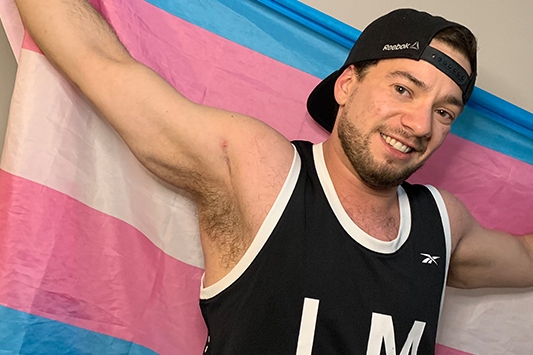
When I wrote my story in 2018 about being a trans man, I shared it on the RPM Facebook group. Another man commented, “I’ve been waiting so long to meet you”. Both then and now, I get very emotional when I think about that. I didn’t know there was another trans man teaching RPM out there in the world. We never would have found one another if I hadn’t shared my story.
There is a joke in our community that any trans person with a social media following is automatically an ‘activist’. It’s funny because it’s true; our lives are inherently political. All trans people – especially trans women, especially Black trans people – spend their entire lives striving to meet the arbitrary standards of family members, doctors, politicians, and complete strangers just to stay alive. We are forced to live in the public eye.
Trans people are less likely to participate in sport and physical fitness because of the danger and harassment we face in these spaces. In the United States, right now, there are over 100 anti-trans bills aspiring to become laws; seeking either to outlaw gender-affirming care, or ban trans athletes from participating in sport. Legal barriers to trans existence exist all over the world, because trans people exist all over the world. And we will continue to.
Our bodies, our souls, our hearts and minds are every bit as worthy of nurturing as yours; seek out the LGBTTQIA+ voices in your community and learn from them.
This article originally appeared in the Les Mills Instructor Insider.






